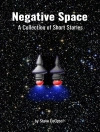In ‘The World Peril of 1910, ‘ George Chetwynd Griffith weaves a gripping tale of impending global catastrophe through a compelling blend of adventure, science fiction, and political commentary. Set against the backdrop of an early 20th-century society on the brink of transformation, the narrative embarks on an exploration of the perils of unchecked technological advancement and environmental degradation. Griffith’s vivid prose and imaginative speculation reflect the anxieties of the Edwardian era, engaging debates around imperialism and the burgeoning threat of industrialization, making it a prescient text that resonates today. Griffith, a prolific writer who embraced the genres of speculative fiction and fantasy, crafted this work at a time when Europe was grappling with rapid changes fueled by technological progress. His travels and experiences as a journalist shaped his critical understanding of geopolitics, providing a rich backdrop to his fiction. This novel stands out as a reflection of Griffith’s concern for humanity’s future and his ambition to merge entertainment with moral insight, a hallmark of his career as an author. This thought-provoking novel is essential reading for those interested in speculative fiction and the historical context of early 20th-century concerns. ‘The World Peril of 1910’ invites readers not only to entertain the possibilities of the future but also to reflect on the ethical dimensions of progress, making it a timeless exploration of humanity’s most pressing dilemmas.
เกี่ยวกับผู้แต่ง
George Chetwynd Griffith (1857-1906) was a prolific British science fiction writer and noted explorer, who gained recognition in the late 19th and early 20th centuries for his speculative and imaginative works. Born in Plymouth, Devon, Griffith set out as a correspondent and travel writer, traversing multiple continents, which imbued in him a sense of adventure that prominently reflected in his narratives. He is perhaps best known for his novel ‘The World Peril of 1910’, a futuristic tale that garnered attention for its prescient themes of global conflict and technological warfare, elements that would later realize themselves in the First World War. His literary style is characterized by a blend of adventure and scientific foresight, interwoven with elements of the extraordinary. During his career, Griffith captivated readers with his ability to intertwine contemporary scientific theories with thrilling plots, a testament to his vision and creativity. In addition to ‘The World Peril of 1910’, Griffith’s oeuvre includes works such as ‘The Angel of the Revolution’, which presents a unique blend of aero-technology and socialist utopia, revealing a dynamic interaction with the sociopolitical currents of his time. Though his fame has somewhat faded, George Chetwynd Griffith’s contributions to the genre of science fiction and his anticipatory narratives remain a significant part of the literary chronicle of speculative fiction.












